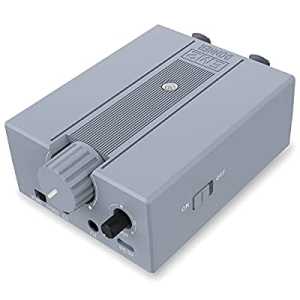
Why Choose Minimally Invasive Heart Surgery? Key Advantages Explained

Heart surgery has come a long way from its traditional, highly invasive methods. With the advent of minimally invasive heart surgery (MIHS), patients now have access to safer, more effective treatments that require smaller incisions, reduced recovery time, and fewer complications. This approach has revolutionized cardiac care, offering new hope to patients who might otherwise face significant risks or lengthy hospital stays.
In this blog, we’ll explore what minimally invasive heart surgery entails, its advantages, and why it has become a preferred choice for many patients and healthcare providers.
What Is Minimally Invasive Heart Surgery?
Minimally invasive heart surgery is a type of cardiac procedure performed through small incisions in the chest, rather than the large cuts required for traditional open-heart surgery. Instead of cutting through the breastbone, surgeons use specialized instruments and techniques to operate on the heart, often with the help of advanced imaging or robotic assistance.
Common Procedures Performed Using MIHS
-
Heart Valve Repair or Replacement: Treating issues with the mitral, tricuspid, or aortic valves.
-
Coronary Artery Bypass Grafting (CABG): Performed on select cases of blocked arteries.
-
Atrial Fibrillation Surgery: Correcting irregular heartbeats.
-
Atrial Septal Defect Repair: Fixing holes in the heart's wall.
-
Tumor Removal: Excising benign or malignant growths in the heart.
Key Advantages of Minimally Invasive Heart Surgery
The benefits of MIHS are numerous, positively impacting not only the procedure itself but also the patient’s overall recovery and quality of life. Let’s explore the key advantages in detail.
1. Smaller Incisions
-
Reduced Trauma: MIHS involves incisions that are 3–4 inches long, compared to 6–8 inches in traditional surgery.
-
No Sternotomy: The breastbone remains intact in most cases, preserving chest stability and strength.
2. Faster Recovery Time
-
Shorter Hospital Stay: Patients are often discharged within 3–5 days.
-
Quick Return to Normal Activities: Many resume daily life within a few weeks.
3. Reduced Pain and Discomfort
-
Less Post-Operative Pain: Smaller incisions result in less tissue damage.
-
Minimal Use of Pain Medications: Fewer painkillers reduce medication-related side effects.
4. Fewer Complications
-
Lower Risk of Infection: Smaller surgical areas reduce the chance of infection.
-
Decreased Blood Loss: Minimal bleeding lowers the need for transfusions.
-
Reduced Scarring: Cosmetic outcomes are significantly improved.
5. Enhanced Precision
-
Robotic Assistance: Some procedures utilize robotic systems for refined movement and control.
-
Better Visualization: High-definition imaging offers a clear view of the surgical site.
In many hospitals today, a cardiologist in Seawoods may recommend MIHS for suitable patients due to its advanced capabilities and lower complication rates.
6. Suitable for High-Risk Patients
MIHS is especially beneficial for patients who are older, have obesity, or suffer from diabetes, as the less invasive nature reduces overall body stress.
Who Is a Candidate for Minimally Invasive Heart Surgery?
Not all patients qualify for MIHS. It is typically recommended for:
-
Isolated valve repairs or replacements.
-
Select coronary artery conditions.
-
Atrial septal defects or cardiac tumors.
-
Those wanting minimal scarring and quicker recovery.
MIHS may not be ideal for:
-
Patients with severe or extensive heart damage.
-
Individuals with previous heart surgeries and scar tissue.
-
Certain anatomical limitations.
Minimally Invasive vs. Traditional Heart Surgery: A Comparison
| Aspect | Minimally Invasive Surgery | Traditional Open-Heart Surgery |
|---|---|---|
| Incision Size | 3–4 inches | 6–8 inches |
| Hospital Stay | 3–5 days | 7–10 days |
| Recovery Time | 2–4 weeks | 6–8 weeks |
| Pain & Discomfort | Less | More |
| Infection Risk | Lower | Higher |
| Blood Loss | Minimal | Significant |
| Scarring | Minimal | More visible |
The Role of Technology in MIHS
Robotic and Imaging Advances
-
Robotic-Assisted Surgery: Allows for precise movement in tight spaces.
-
3D Imaging and Visualization: Improves surgical accuracy and planning.
-
Catheter-Based Techniques: Innovations like TAVR eliminate the need for open surgery in some valve cases.
Recovery After Minimally Invasive Heart Surgery
-
Immediate Monitoring: Patients are observed in the ICU for 1–2 days.
-
Pain Control: Most discomfort is mild and managed easily.
-
Activity: Light movement resumes in days, with full recovery in 4–6 weeks.
-
Follow-Up: Ongoing check-ups track healing and heart function.
Why Surgeons Recommend MIHS
Surgeons often choose MIHS to provide top-tier outcomes with reduced trauma, faster healing, and better patient satisfaction. It’s especially ideal for those who value cosmetic results and minimal downtime.
Conclusion
Minimally invasive heart surgery has redefined the future of cardiac care. With numerous advantages like smaller incisions, quicker recovery, and fewer complications, it’s quickly becoming the go-to method for eligible patients.
If you’re considering heart surgery, talk to a cardiologist to see if this option is right for you. Embracing this innovative approach may be the key to a smoother, safer, and faster path to recovery.
Would you like me to create meta description, tags, or category for this post as well?
Author Bio
Article Comments
No Comments!
At present there are zero comments on this article.
Why not be the first to make a comment?
Similar Articles
Search Pages
Upgrade User Account
account to full use of editor,
including hyperlinks
Article Categories
There are zero sub-categories in this parent category.
There are zero sub-categories in this parent category.











